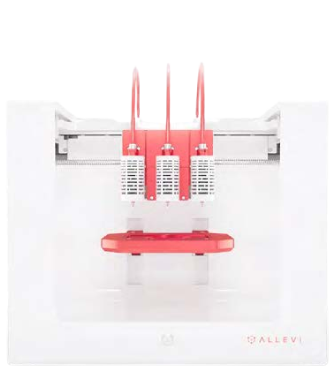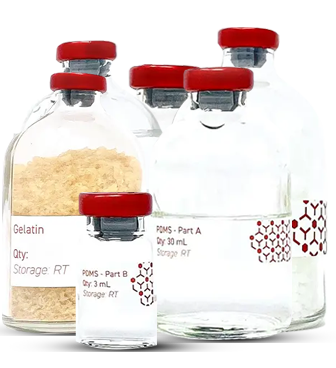3D bioprinting allows researchers to create custom 3D tissues for research, investigate new disease models, and study the body outside the body with a level of freedom and ease of use. We help researchers worldwide in finding solutions to humanity’s most difficult problems — to cure diseases, to test novel drugs, and to build with life.
Allevi — a US-based company and part of the 3D Systems family, has its core mission to make designing and engineering 3D tissues easy. A highly useful range of desktop 3D bioprinters and a wide range of bio-inks, make it one of the most powerful and easy-to-use bioprinters in the market.


Bio-inks are natural and synthetic biomaterials that mimic the extracellular matrix (ECM) to support the adhesion, proliferation, and differentiation of living cells. These materials give cells the important cues they need to live, grow, and create functional 3D tissue.
Allevi 3D bioprinters are engineered to handle the widest range of bio-inks. Users can easily control conditions that are optimal for the most relevant materials used in tissue engineering. We’re designed to fit your needs and to fit within your existing workflow.

The integrated software solution, Allevi Bioprint Online, empowers novice and expert 3D bioprinting users alike to quickly and easily achieve their goals.
Allevi Bioprint runs entirely in the cloud, which means that you can design your structures, define your materials, and monitor your prints right from your web browser — on any computer.
An experiment-based workflow, built-in model generation, and integrated slicing in Bioprint Pro allow you to focus more on running your experiments and less on setup.
With the best-in-class interface and cutting-edge visualization features you can see and fix potential issues in your projects before you print, saving time and money.
Design the experiments once, using multiple structures and print parameters on a single well plate, and repeat the prints based on your needs.
| Extruders | 3 x Allevi CORE Extruder |
| Photocuring | LED – 365nm and 405 nm |
| Printing Technology | Fused Deposition Manufacturing (FDM |
| Compatible Syringes | 5 mL plastic, 5 mL metal |
| Min. Temp | 4ºC |
| Max. Temp | 160ºC |
| Min. Pressure | 1 PS |
| Max. Pressure | ±0.1 PSI |
| Pressure Variance | ±0.1 PSI |
| Heated Bed Temperature | Ambient – 60ºC |
| Construction | Aluminium Frame |
| X, Y Precision | 1 µm |
| Z Precision | 1 µm |
| Build Volume (W x H x D) | 3.5 x 2.4 x 5.1 in (42.8 in³) |
| Build Volume Metric (W x H x D) | 9 x 6 x 13 cm (702 cm³) |
| Supported Build Plates | Slide, Petri Dish, Well Plate |
| Dimensions (W x H x D) | 18.4 x 15.2 x 14.2 in |
| Dimensions Metric (W x H x D) | 46.7 x 38.8 x 36.0 cm |
| Weight | 40 lbs (18.1 kg) |
| Power Requirements | AC 110V – 220V |